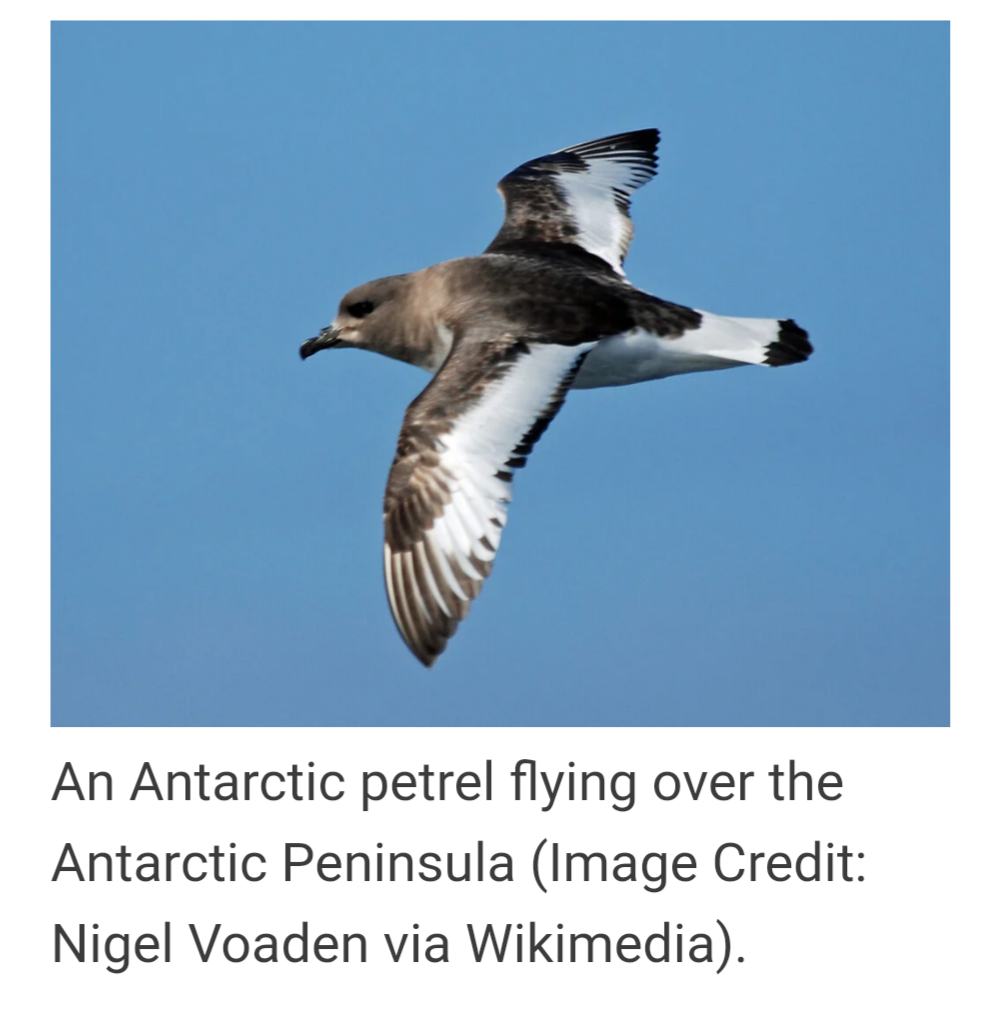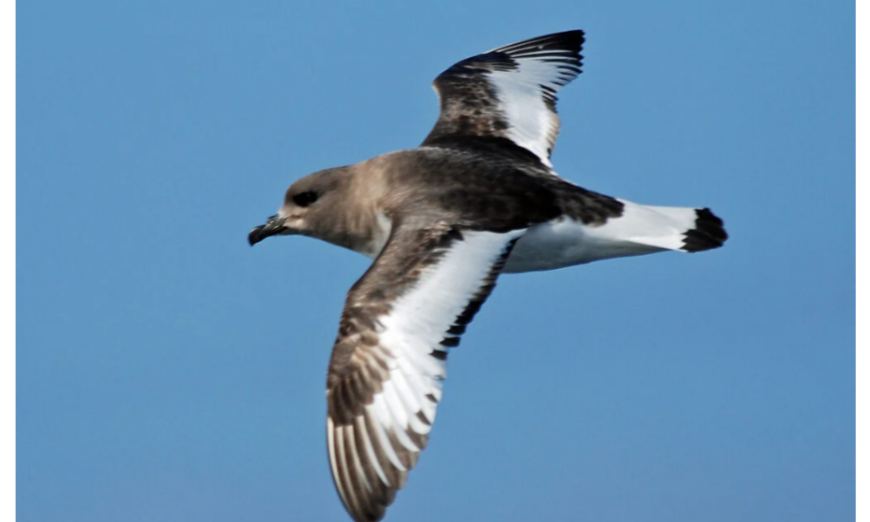March 17, 2023 by Sam Illingworth.
Feathered ghosts of winter seas
tumble through the tapestry,
flecks of white and pearl
skirting squalls
before the blizzard’s blast;
wild whiteouts
washing clean
the ends
of the Earth.
Shaken by the sky’s frozen rage,
sterile cliffs and barren ground
echo with the silence of the winds –
a stilted sign of storms to come
and those who ride
without
return.

This poem is inspired by recent research, which has found that entire populations of Antarctic seabirds fail to breed due to extreme, climate-change-related snowstorms.
Climate change can cause extreme weather events that can be harmful to wildlife, including individual animals and entire ecosystems. This is because climate change increases the frequency and intensity of these events. In polar environments, such extreme events can include heat waves, unusual concentrations of sea ice, and severe storms.
For example, even though Antarctic seabirds such as snow petrels and south polar skuas, are adapted to harsh conditions, extreme weather events can still impact their ability to breed and other important aspects of their lives.
These birds lay their eggs on bare ground, and with enough snow, the ground becomes inaccessible, making it impossible for the chicks to survive.
In this new study, researchers found that climate change caused by increased snowfall has led to significant declines in the breeding success of several Antarctic birds.
Svarthamaren and Jutulsessen in Antarctica have some of the world’s largest Antarctic petrel colonies and are crucial nesting sites for snow petrels and south polar skuas. From 1985-2020, there were up to 200,000 Antarctic petrel nests, 2,000 snow petrel nests, and over 100 skua nests annually.
However, in the 2021-2022 season, researchers were unable to find a single south polar skua nest, and the number of Antarctic petrel and snow petrel nests dropped to almost zero.
The study found that the unusually strong, climate change-induced snowstorms of this year interfered with the birds’ ability to breed, resulting in zero breeding success.
The climate crisis means that Antarctic extreme weather events are likely to become more frequent and given that there is clearly already a decline in some critical Antarctic seabird populations, the intensification of these storms could result in their extinction.

